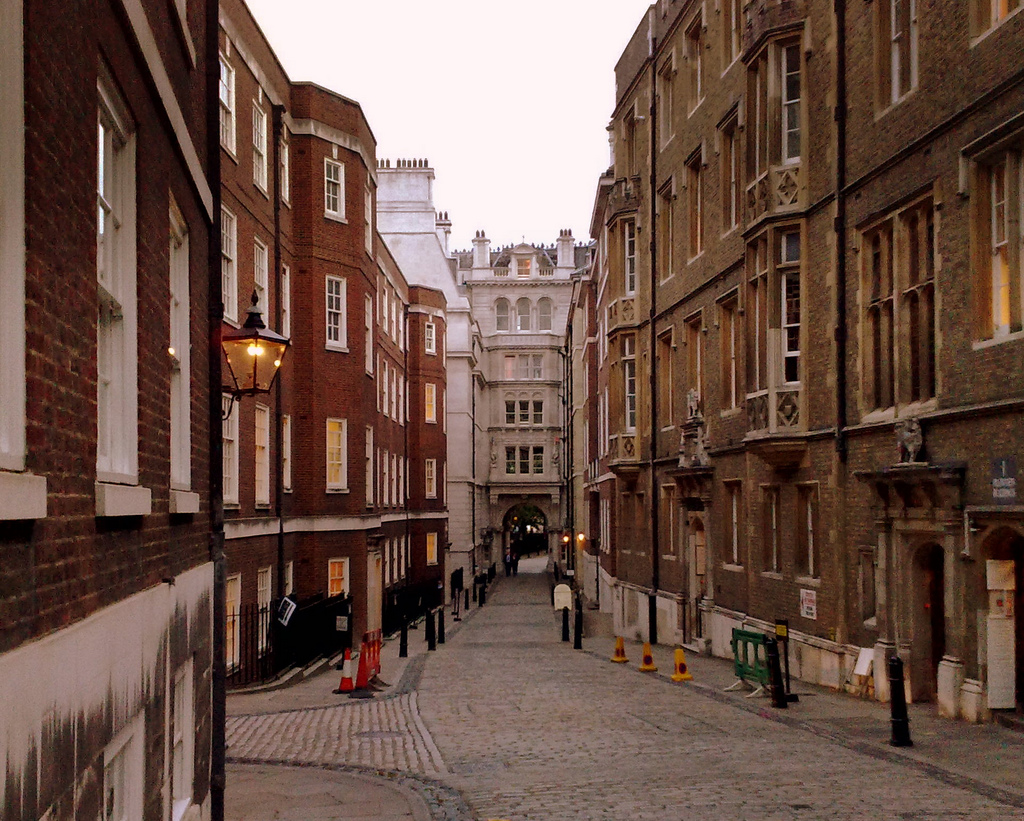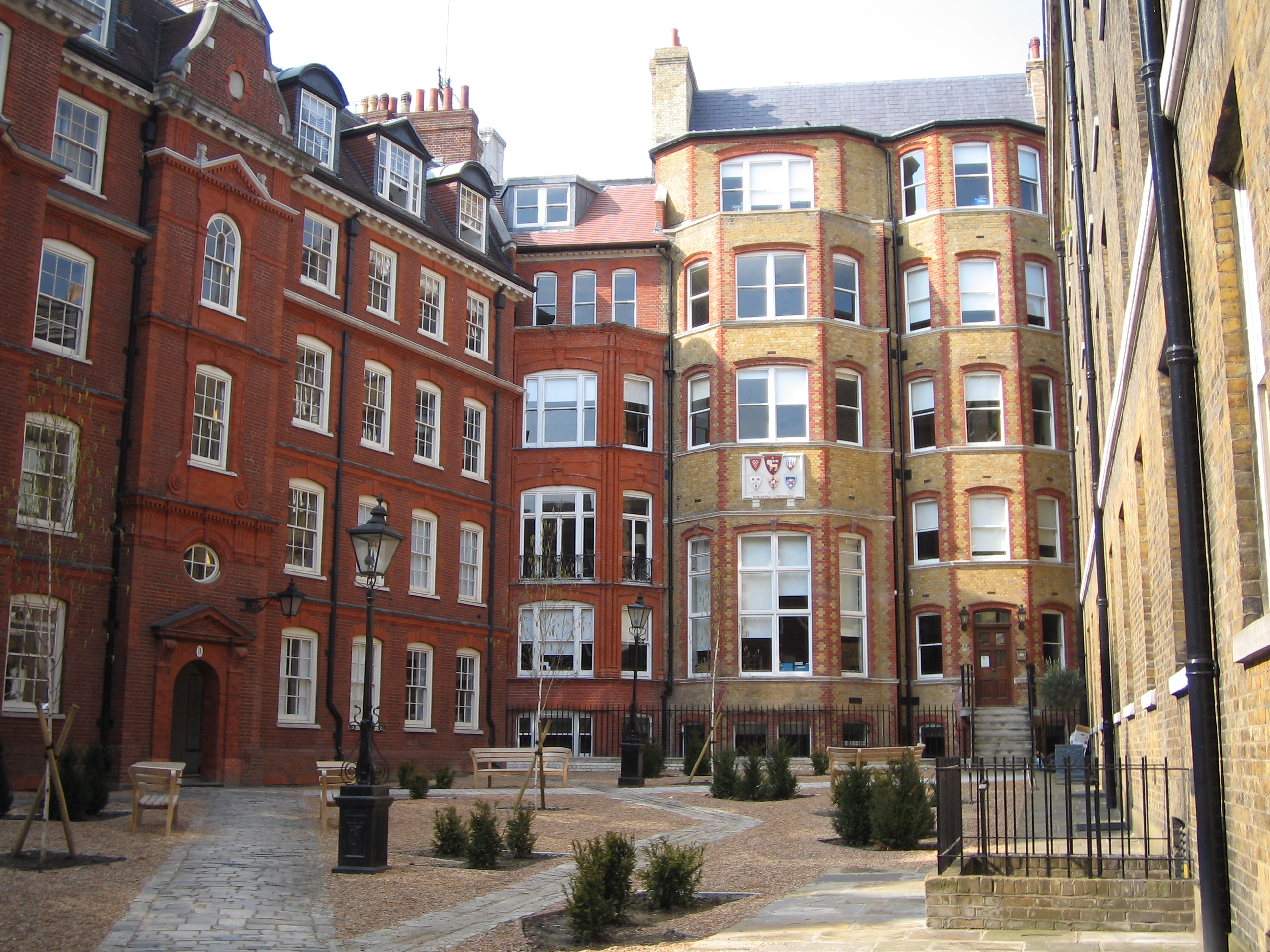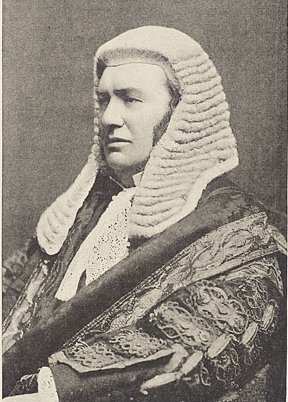|
Society Of Serjeants' Inn
Serjeant's Inn (formerly Serjeants' Inn) was the legal inn of the Serjeants-at-Law in London. Originally there were two separate societies of Serjeants-at-law: the Fleet Street inn dated from 1443 and the Chancery Lane inn dated from 1416. In 1730, the Fleet Street lease was not renewed and the two societies merged. The society's relevance diminished as Serjeants-at-Law were gradually superseded by Queen's Counsel in the nineteenth century. The building in Chancery Lane was sold in 1877 and the assets were distributed amongst the surviving members, although the society was not formally dissolved. The last member, Lord Lindley Nathaniel Lindley, Baron Lindley, (29 November 1828 – 9 December 1921) was an English judge. Early life He was the second son of the botanist Dr. John Lindley, born at Acton Green, London. From his mother's side, he was descended from Sir Edw ..., died in 1921. ( A. M. Sullivan, who died in 1959, was appointed to the equivalent Irish office in 1912, ... [...More Info...] [...Related Items...] OR: [Wikipedia] [Google] [Baidu] |
ONL (1887) 1
ONL may stand for: * Online, as used in text messaging and academic circles * Orange and Lemons, a Filipino band * Order of Newfoundland and Labrador, a title * Outer nuclear layer, a layer of the retina * Oosterhuis Lénárd architecture office by Kas Oosterhuis Kas Oosterhuis (1951) is a Dutch architect, professor and co-founder of the innovation studio ONL together with visual artist Ilona Lénárd. He was a professor at Delft University of Technology (TU Delft) from 2000 to 2016 and has been a profes ... * Opening Night Live {{disambig ... [...More Info...] [...Related Items...] OR: [Wikipedia] [Google] [Baidu] |
Robert Adam
Robert Adam (3 July 17283 March 1792) was a British neoclassical architect, interior designer and furniture designer. He was the son of William Adam (1689–1748), Scotland's foremost architect of the time, and trained under him. With his older brother John, Robert took on the family business, which included lucrative work for the Board of Ordnance, after William's death. In 1754, he left for Rome, spending nearly five years on the continent studying architecture under Charles-Louis Clérisseau and Giovanni Battista Piranesi. On his return to Britain he established a practice in London, where he was joined by his younger brother James. Here he developed the "Adam Style", and his theory of "movement" in architecture, based on his studies of antiquity and became one of the most successful and fashionable architects in the country. Adam held the post of Architect of the King's Works from 1761 to 1769. Robert Adam was a leader of the first phase of the classical revival in En ... [...More Info...] [...Related Items...] OR: [Wikipedia] [Google] [Baidu] |
Former Buildings And Structures In The London Borough Of Camden
A former is an object, such as a template, gauge or cutting die, which is used to form something such as a boat's hull. Typically, a former gives shape to a structure that may have complex curvature. A former may become an integral part of the finished structure, as in an aircraft fuselage, or it may be removable, being using in the construction process and then discarded or re-used. Aircraft formers Formers are used in the construction of aircraft fuselage, of which a typical fuselage has a series from the nose to the empennage, typically perpendicular to the longitudinal axis of the aircraft. The primary purpose of formers is to establish the shape of the fuselage and reduce the column length of stringers to prevent instability. Formers are typically attached to longerons, which support the skin of the aircraft. The "former-and-longeron" technique (also called stations and stringers) was adopted from boat construction, and was typical of light aircraft built until the ad ... [...More Info...] [...Related Items...] OR: [Wikipedia] [Google] [Baidu] |
List Of Demolished Buildings And Structures In London ...
This list of demolished buildings and structures in London includes buildings, structures and urban scenes of particular architectural and historical interest, scenic buildings which are preserved in old photographs, prints and paintings, but which have been demolished or were destroyed by bombing in World War II. Only a small number of the most notable buildings are listed out of the many thousands which have been demolished. Buildings See also * Metropolitan Board of Works * Gaiety Theatre, London * List of demolished churches in the City of London * List of public art formerly in London References {{Destroyed heritage Dem DEM was the ISO 4217 currency code for the Deutsche Mark, former currency of Germany Computing * Digital elevation model, a digital representation of ground-surface topography or terrain ** .dem, a common extension for USGS DEM files * Discret ... [...More Info...] [...Related Items...] OR: [Wikipedia] [Google] [Baidu] |
Apex Hotels
Apex Hotels is an operator of three star and four star hotels based in Edinburgh, Scotland. The company operates ten hotels in the United Kingdom. History Executive Chairman of Apex Hotels, Norman Springford, was previously an employee of the Inland Revenue and owner/operator of a number of public houses, bingo halls, and the Edinburgh Playhouse Edinburgh Playhouse is a theatre in Edinburgh, Scotland. With 3,059 seats it is the second largest theatre in the United Kingdom after the Hammersmith Apollo. The theatre is owned by Ambassador Theatre Group. Building history The theatre opened .... In 1996 Norman opened his first hotel, the Apex International Hotel, in Edinburgh. The group now own 9 UK hotels across London, Edinburgh, Glasgow and Dundee. References External links * 1996 establishments in Scotland Companies based in Edinburgh Hotels established in 1996 Hotel chains in the United Kingdom {{UK-hotel-stub ... [...More Info...] [...Related Items...] OR: [Wikipedia] [Google] [Baidu] |
The Temple (London)
The Temple is an area of London surrounding Temple Church. It is one of the main legal districts in London and a notable centre for English law, historically and in the present day. It consists of the Inner Temple and the Middle Temple, which are two of the four Inns of Court and act as local authorities in place of the City of London Corporation as to almost all structures and functions. The Royal Courts of Justice are just to the north and Temple tube station borders to the southwest in the City of Westminster. The associated area is roughly bounded by the River Thames (the Victoria Embankment) to the south, Surrey Street to the west, the Strand and Fleet Street to the north and Carmelite Street and Whitefriars Street to the east. The intervening Essex Street, two streets east of Surrey Street is the traditional western boundary, beyond which are affluent office/hotel and residential blocks, spread over large three street blocks which are closest to the station. Extent Templ ... [...More Info...] [...Related Items...] OR: [Wikipedia] [Google] [Baidu] |
Inner Temple
The Honourable Society of the Inner Temple, commonly known as the Inner Temple, is one of the four Inns of Court and is a professional associations for barristers and judges. To be called to the Bar and practise as a barrister in England and Wales, a person must belong to one of these Inns. It is located in the wider Temple area, near the Royal Courts of Justice, and within the City of London. The Inn is a professional body that provides legal training, selection, and regulation for members. It is ruled by a governing council called "Parliament", made up of the Masters of the Bench (or "Benchers"), and led by the Treasurer, who is elected to serve a one-year term. The Temple takes its name from the Knights Templar, who originally (until their abolition in 1312) leased the land to the Temple's inhabitants (Templars). The Inner Temple was a distinct society from at least 1388, although as with all the Inns of Court its precise date of founding is not known. After a disrupted early ... [...More Info...] [...Related Items...] OR: [Wikipedia] [Google] [Baidu] |
Inns Of Court
The Inns of Court in London are the professional associations for barristers in England and Wales. There are four Inns of Court – Gray's Inn, Lincoln's Inn, Inner Temple and Middle Temple. All barristers must belong to one of them. They have supervisory and disciplinary functions over their members. The Inns also provide libraries, dining facilities and professional accommodation. Each also has a church or chapel attached to it and is a self-contained precinct where barristers traditionally train and practise, although growth in the legal profession, together with a desire to practise from more modern accommodations and buildings with lower rents, caused many barristers' chambers to move outside the precincts of the Inns of Court in the late 20th century. History During the 12th and early 13th centuries, law was taught in the City of London, primarily by the clergy. But a papal bull in 1218 prohibited the clergy from practising in the secular courts (where the English common ... [...More Info...] [...Related Items...] OR: [Wikipedia] [Google] [Baidu] |
Amicable Society For A Perpetual Assurance Office
Amicable Society for a Perpetual Assurance Office (a.k.a. "Amicable Society") is considered the first life insurance company in the world.Anzovin, p. 121 ''The first life insurance company known of record was founded in 1706 by the Bishop of Oxford and the financier Thomas Allen in London, England. The company, called the Amicable Society for a Perpetual Assurance Office, collected annual premiums from policyholders and paid the nominees of deceased members from a common fund.''Baynes, p.180 History Amicable Society was founded in London in 1706 by William Talbot (Bishop of Oxford) and Sir Thomas Allen, 2nd Baronet. The first plan of life insurance was that each member paid a fixed annual payment per share on from one to three shares with consideration to age of the members being twelve to fifty-five. At the end of the year a portion of the "amicable contribution" was divided among the wives and children of deceased members and it was in proportion to the amount of shares the ... [...More Info...] [...Related Items...] OR: [Wikipedia] [Google] [Baidu] |
Serjeant-at-Law
A Serjeant-at-Law (SL), commonly known simply as a Serjeant, was a member of an order of barristers at the English and Irish Bar. The position of Serjeant-at-Law (''servientes ad legem''), or Sergeant-Counter, was centuries old; there are writs dating to 1300 which identify them as descended from figures in France before the Norman Conquest, thus the Serjeants are said to be the oldest formally created order in England. The order rose during the 16th century as a small, elite group of lawyers who took much of the work in the central common law courts. With the creation of Queen's Counsel (or "Queen's Counsel Extraordinary") during the reign of Elizabeth I, the order gradually began to decline, with each monarch opting to create more King's or Queen's Counsel. The Serjeants' exclusive jurisdictions were ended during the 19th century and, with the Judicature Act 1873 coming into force in 1875, it was felt that there was no need to have such figures, and no more were created. The ... [...More Info...] [...Related Items...] OR: [Wikipedia] [Google] [Baidu] |
Amicable Society For A Perpetual Assurance Office, Serjeants' Inn, Fleet Street, London, 1801
Amicable numbers are two different natural numbers related in such a way that the sum of the proper divisors of each is equal to the other number. That is, σ(''a'')=''b'' and σ(''b'')=''a'', where σ(''n'') is equal to the sum of positive divisors of ''n'' (see also divisor function). The smallest pair of amicable numbers is (220, 284). They are amicable because the proper divisors of 220 are 1, 2, 4, 5, 10, 11, 20, 22, 44, 55 and 110, of which the sum is 284; and the proper divisors of 284 are 1, 2, 4, 71 and 142, of which the sum is 220. (A proper divisor of a number is a positive factor of that number other than the number itself. For example, the proper divisors of 6 are 1, 2, and 3.) The first ten amicable pairs are: (220, 284), (1184, 1210), (2620, 2924), (5020, 5564), (6232, 6368), (10744, 10856), (12285, 14595), (17296, 18416), (63020, 76084), and (66928, 66992). . (Also see and ) It is unknown if there are infinitely many pairs of amicable numbers. A pair of ami ... [...More Info...] [...Related Items...] OR: [Wikipedia] [Google] [Baidu] |
World War II
World War II or the Second World War, often abbreviated as WWII or WW2, was a world war that lasted from 1939 to 1945. It involved the vast majority of the world's countries—including all of the great powers—forming two opposing military alliances: the Allies and the Axis powers. World War II was a total war that directly involved more than 100 million personnel from more than 30 countries. The major participants in the war threw their entire economic, industrial, and scientific capabilities behind the war effort, blurring the distinction between civilian and military resources. Aircraft played a major role in the conflict, enabling the strategic bombing of population centres and deploying the only two nuclear weapons ever used in war. World War II was by far the deadliest conflict in human history; it resulted in 70 to 85 million fatalities, mostly among civilians. Tens of millions died due to genocides (including the Holocaust), starvation, ma ... [...More Info...] [...Related Items...] OR: [Wikipedia] [Google] [Baidu] |
_1.084_-_Old_Serjeants'_Inn.jpg)
.jpg)








